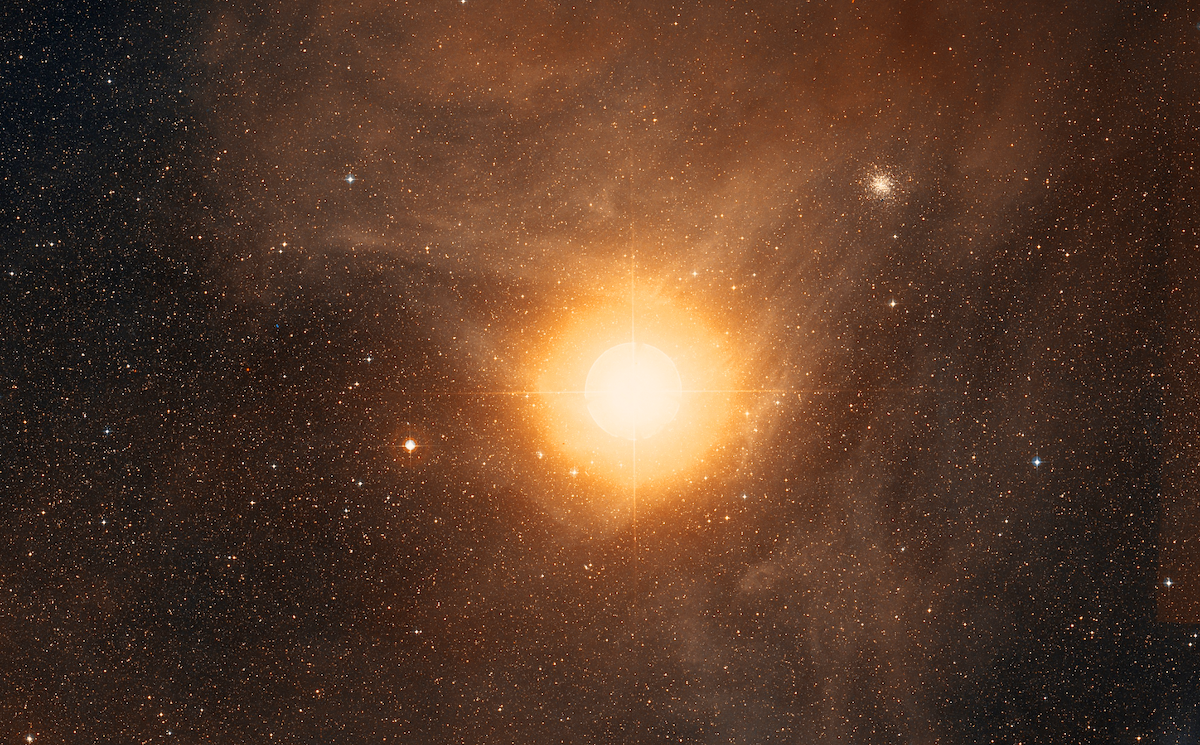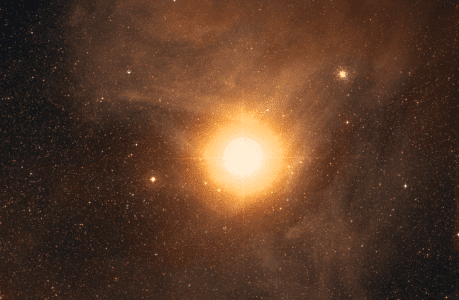Antares is a red supergiant star that can be found in the constellation Scorpius, one of the most recognizable and prominent constellations in the night sky. It is a massive and intriguing celestial body that has captured the attention of astronomers and stargazers alike for many years.
Characteristics of Antares
Antares is estimated to be around 12 million years old, which is relatively young compared to other stars in our galaxy. However, its sheer size is what makes it so remarkable. It is approximately 700 times larger than our sun and around 15 times more massive. This makes Antares one of the largest known stars in the Milky Way galaxy.
The star’s reddish appearance is a result of its surface temperature, which is cooler than that of our sun. Despite its size, Antares is only the 15th brightest star in the night sky, owing to its distance from Earth, which is approximately 550 light-years away.
Antares is classified as a type M supergiant, which means that it is nearing the end of its life cycle. It is expected to end its life as a spectacular supernova, which could potentially be visible from Earth in the coming years.
History and Mythology
The name Antares comes from the Greek word “anti-Ares,” which means “rival of Mars.” This is because of its reddish appearance, which resembles the planet Mars. In ancient mythology, Antares was associated with Scorpius, the scorpion, which was believed to have been sent by the gods to kill Orion, a famed hunter.
In modern times, Antares has been studied extensively by astronomers using a variety of instruments, including the Hubble Space Telescope. This has allowed scientists to gain a better understanding of the star’s characteristics and behaviour.
Where can I find antares
Antares is located in the Scorpius constellation, which can be seen in the southern hemisphere during the summer months and in the northern hemisphere during the winter months. It is visible to the naked eye, but a good telescope or binoculars can provide a more detailed view. To locate Antares, look for the bright, red star near the centre of the Scorpius constellation.
Scorpius
Scorpius is one of the 88 recognized constellations in the night sky, and it is located in the southern hemisphere. It is one of the brightest and most recognizable constellations, and its name is derived from the Latin word for scorpion.
The Scorpius constellation is located between the constellations of Sagittarius and Libra. It is known for its distinctive shape, which resembles a scorpion with its curved tail and stinger. The brightest star in the Scorpius constellation is Antares, which is a red supergiant star located near the centre of the constellation.
In addition to Antares, Scorpius contains many other interesting celestial objects, including several globular clusters and nebulae. One of the most notable objects in Scorpius is the Butterfly Cluster, which is a beautiful open star cluster that is visible with a telescope.
Scorpius is best visible during the summer months in the southern hemisphere and during the winter months in the northern hemisphere. To locate Scorpius, look for its distinctive shape in the night sky. It is easily visible to the naked eye, and a good star chart or sky app can help you to identify its exact location.
Red supergiant
A red supergiant is a type of star that has a large radius and a low surface temperature, resulting in a red colour. These stars are some of the largest known stars in the universe, and they are often the end stage of the evolution of a star that is more massive than our sun.
Red supergiants are classified as type M stars, and they are typically located in the upper right corner of the Hertzsprung-Russell diagram, which is a graphical representation of stars based on their luminosity and temperature.
One of the most famous red supergiants is Betelgeuse, which is located in the constellation Orion. Betelgeuse is estimated to be around 20 times more massive than our sun, and it is one of the largest known stars in the universe.
Red supergiants are also known for their tendency to explode as supernovae at the end of their lives. When a red supergiant runs out of fuel in its core, it collapses and undergoes a catastrophic explosion that can briefly outshine an entire galaxy. This explosion can also result in the formation of heavy elements, which are dispersed into the universe and can eventually become the building blocks of new stars and planets.
In conclusion, red supergiants are fascinating celestial objects that play an important role in the evolution of the universe. Their large size and distinctive red colour make them easy to identify in the night sky, and they offer valuable insights into the workings of the cosmos.
Conclusion
Antares is a remarkable celestial body that has captured the imagination of humans for many years. Its massive size, reddish appearance, and fascinating history make it a popular target for astronomers and stargazers alike. By studying Antares, scientists hope to learn more about the evolution of stars and the universe as a whole.

